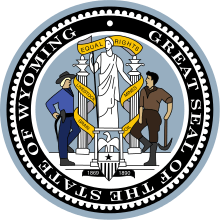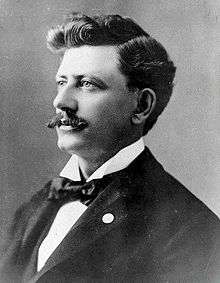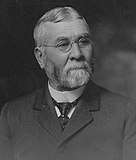1892 Wyoming gubernatorial special election
The Wyoming gubernatorial election of 1892 took place on September 6, 1892. The Republican incumbent Amos W. Barber chose to not seek a term in his own right as governor of Wyoming. Democratic candidate and physician, farmer and banker John Eugene Osborne defeated the Republican Edward Ivinson with 53.84% of the vote.
| |||||||||||||||||
| Turnout | 28.43% of Total Population | ||||||||||||||||
|---|---|---|---|---|---|---|---|---|---|---|---|---|---|---|---|---|---|
| |||||||||||||||||
| |||||||||||||||||
| Elections in Wyoming | ||||||||
|---|---|---|---|---|---|---|---|---|
 | ||||||||
|
||||||||
|
State government
|
||||||||
Results
| Party | Candidate | Votes | % | |
|---|---|---|---|---|
| Democratic | John Eugene Osborne | 9,290 | 53.84% | |
| Republican | Edward Ivinson | 7,509 | 43.52% | |
| Prohibition | William Brown | 421 | 2.44% | |
| Write-ins | Write-ins | 36 | 0.21% | |
| Total votes | 17,256 | 100% | ||
gollark: Indeed. It makes people less likely to try and actually investigate how their system works and treat it as a black box.
gollark: Chromebooks and iPhones and kind of Android phones/tablets (especially on newer versions) use general purpose processors, but with locked bootloaders and limited OSes. Generally to give the company making them a monopoly on app distribution/data gathering and to make DRM schemes "work".
gollark: Or, well, try to.
gollark: There seems to be an increasing trend to make computing stuff not general-purpose, which is annoying.
gollark: Phones are general-purpose computers, regardless of how much the companies don't really want that.
References
This article is issued from Wikipedia. The text is licensed under Creative Commons - Attribution - Sharealike. Additional terms may apply for the media files.

